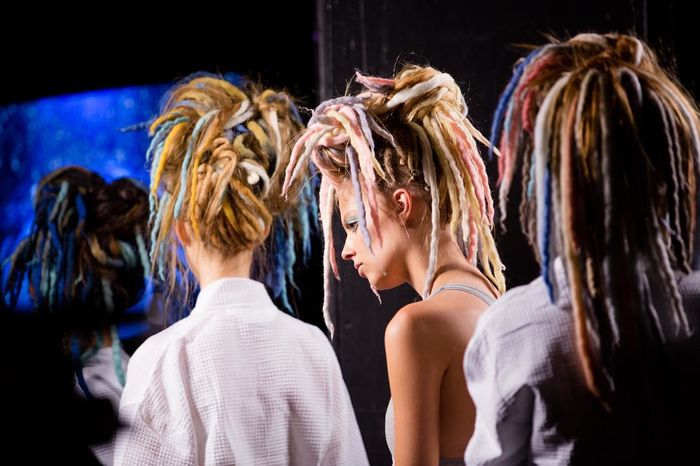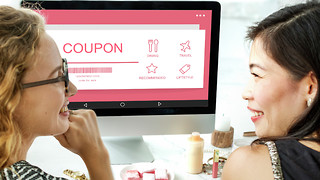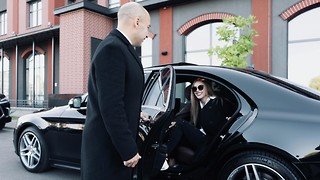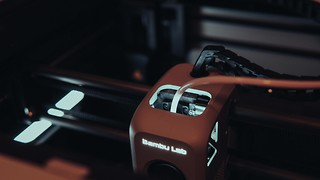Normal People, bralettes and small boobs: a self-acceptance journey
Amber Marino reflects on living with small boobs in a society focused on sexualising big busts and how she has reached self-acceptance through changing media representation and products catered to her body type
I have been insecure about my boobs, or what seems like the lack thereof, for the entirety of my teenage years. Growing up in the 2000s, I was fed a singular narrative: the desirable female body type consists of a lot of cleavage. It was the age of water, gel and push-up bras. The supermarket magazine aisle that I passed as a child led me to believe that a D cup was my eventual destiny. Alas, if my adolescent years had a tagline, it would be A Chorus Line’s Val shrieking ‘Tits! When am I gonna grow tits?’. Without them, I felt forever consigned to girlhood. However, the late 2010s brought with them a seismic shift in the way that cleavage is perceived in the fashion industry, no longer epitomising female desirability. Though it is bleak that women’s bodies, like commodities, can pass in and out of fashion, this lapse in the bustier appearance has inspired a genuine, newfound love for my body.
Comparing our bodies to the current norm is a futile exercise given that what constitutes a desirable body has fluctuated so much throughout history. Focusing on breasts in particular, the western trends of the last century have seen everything from the ‘matronly monobosom’ of the 1910s, as Lorraine Smith writes, to the pointy ‘sweater girls’ of the 1950s pioneered by, according to Malcolm MacLaham, the likes of Lana Turner and Jane Russell. The body I hated for so long would have been envied in the 1920s when, according to Marlen Komar, women bandaged their breasts down to flatten their bust and achieve the youthful look of a more androgynous body. This iconic trope was epitomised by The Great Gatsby’s, ‘slender, small-breasted’ Jordan Baker. That said, telling ourselves that society would have deemed us desirable at some point is not a particularly healthy or effective mechanism of self-acceptance. Indeed, some body types, such as those of trans and disabled people, have never been fully acknowledged by society. Simply, it is important to remember the transience of trends and aim to create a society that celebrates the full diversity of all body types.
Binging this series in a day led to my radical self-acceptance whilst a culture saturated with cleavage had perpetuated my self-hatred
With its very thin, very white cast, Normal People is not the most obvious contender for a TV series that champions body diversity. However, the small chest of leading actress Daisy Edgar-Jones was immensely refreshing to see and helped to illuminate the importance of representation to me – something I have been embarrassingly ignorant of for most of my life. Let me be clear, I am not comparing my experience of a slight, cosmetic “imperfection” with the experiences of people with more severely underrepresented body types. Being thin, white (ish), able-bodied and (forgive me) meeting many of today’s beauty standards, I have seen plenty of complex, nuanced characters with bodies similar to mine. Nevertheless, for years I had been bombarded by images of very busty women in film and TV and was convinced that I was the only soul who had never grown that singular marker of femininity.
But, if I had to name a singular cause for my sudden, radical acceptance of my flat chest, it would undoubtedly be the intimate scenes that Daisy Edgar-Jones shoots for Normal People. It was the first time I had seen a body exactly like mine both normalised and sexualised. This was crucial in my journey to self-acceptance. In fact, the mere exposure effect discovered by Zajonc dictates that increased familiarity to any stimulus can favour our preferences towards it. This could explain why binging this series in a day led to my radical self-acceptance, and why beforehand, a culture saturated with cleavage had perpetuated my self-hatred.
While Normal People was the main catalyst in my journey to self-acceptance, among other intersecting layers of privilege, the bralette trend has also emboldened my fashion choices. Once I renounced creating the illusion of a bust that I didn’t have, I could also shed the uncomfortable underwire that I so didn’t need. It was fucking liberating to choose to prioritise my own comfort. However, only a few years ago the bralette market was not what it is today. I had to endure the humiliation of M&S Angel First Bras for far too long, but the explosion in the bralette market has meant that I now enjoy a range of adult designs that cater to my body type. Without intending to compare my inconvenience in finding one wardrobe item with the difficulty that activist Sinead Burke faces in navigating an entire world that is not designed for her as a little person, this personal experience has strengthened my resolve to understand and fight for the kind of inclusive design that Burke campaigns for.
The normalisation of diverse body types, and not just the body type that’s in vogue, as well as sizes that cater to everyone, are so important for individuals to be able to foster a positive self-image. I wish I could tell my younger self three things. One. It is absolutely okay to be small-chested. Two. There are more of us out there than you think! And three. You will learn to genuinely love your body. While activist Jameela Jamil champions body neutrality, a sound sentiment given the disgusting amount of time we spend thinking about these vessels, I would be lying if I said I didn’t love the way I look now. And I wouldn’t change my small boobs for the world! Or maybe just one cup size…
 News / Uni offers students £55k in payouts31 October 2025
News / Uni offers students £55k in payouts31 October 2025 News / Uni error forces deeper spending cuts31 October 2025
News / Uni error forces deeper spending cuts31 October 2025 News / Students allowed to use AI, says new uni guidance31 October 2025
News / Students allowed to use AI, says new uni guidance31 October 2025 News / Students launch women’s society excluding trans women31 October 2025
News / Students launch women’s society excluding trans women31 October 2025 News / College rowing captains narrowly vote to exclude trans women31 October 2025
News / College rowing captains narrowly vote to exclude trans women31 October 2025










